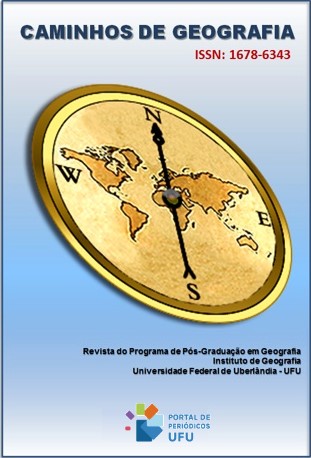PROPOSAL FOR ENVIRONMENTAL ZONING FOR THE MAURÍCIO DE OLIVEIRA MUNICIPAL PARK IN MOSSORÓ/RN
DOI:
https://doi.org/10.14393/RCG249466115Keywords:
Sustainable development, Urban parks, Environmental planningAbstract
The Maurício de Oliveira Municipal Park in Mossoró-RN was inaugurated in 2016 and its creation took place through Municipal Law No. 3,372, having an area of 7.8 ha, containing traces of native vegetation of the Caatinga biome as a maintainer of riparian forest of the Apodi-Mossoró river. Faced with this problem, the present study aims to carry out an environmental zoning proposal of the Mossoró Maurício de Oliveira Municipal Park, because the park does not yet have regulation, management plan and its limits determined by means of geographic coordinates defined by law. For the elaboration of zoning, stages of socio-environmental diagnosis, delimitation of the area of interest, survey of images by unmanned aerial vehicle, image processing and data manipulation were carried out through the free software QGIS. As a result, the creation of four zones was proposed: Extensive Use, Intensive Use, Recovery and Special Use. In the predominance of the Extensive Use zone, due to its occupation as riparian forest with a range of the Park.
Downloads
Downloads
Published
How to Cite
Issue
Section
License
Copyright (c) 2023 Joilson Marques Ferreira Filho, Joel Medeiros Bezerra, Rodrigo Guimarães de Carvalho, Palloma Vitória Carlos de Oliveira, Thiago José Lima Rosa

This work is licensed under a Creative Commons Attribution-NonCommercial-NoDerivatives 4.0 International License.
Autores que publicam nesta revista concordam com os seguintes termos: a) Autores mantém os direitos autorais e concedem à revista o direito de primeira publicação, com o trabalho licenciado sob a Creative Commons Atribuição-NãoComercial-SemDerivações 4.0 Internacional. b) Autores têm permissão e são estimulados a publicar e distribuir seu trabalho online (ex.: em repositórios institucionais ou na sua página pessoal), já que isso pode gerar alterações produtivas, bem como aumentar o impacto e a citação do trabalho publicado. c) Em virtude de aparecerem nesta revista de acesso público, os artigos são de uso gratuito, com atribuições próprias, em aplicações educacionais e não-comerciais.











